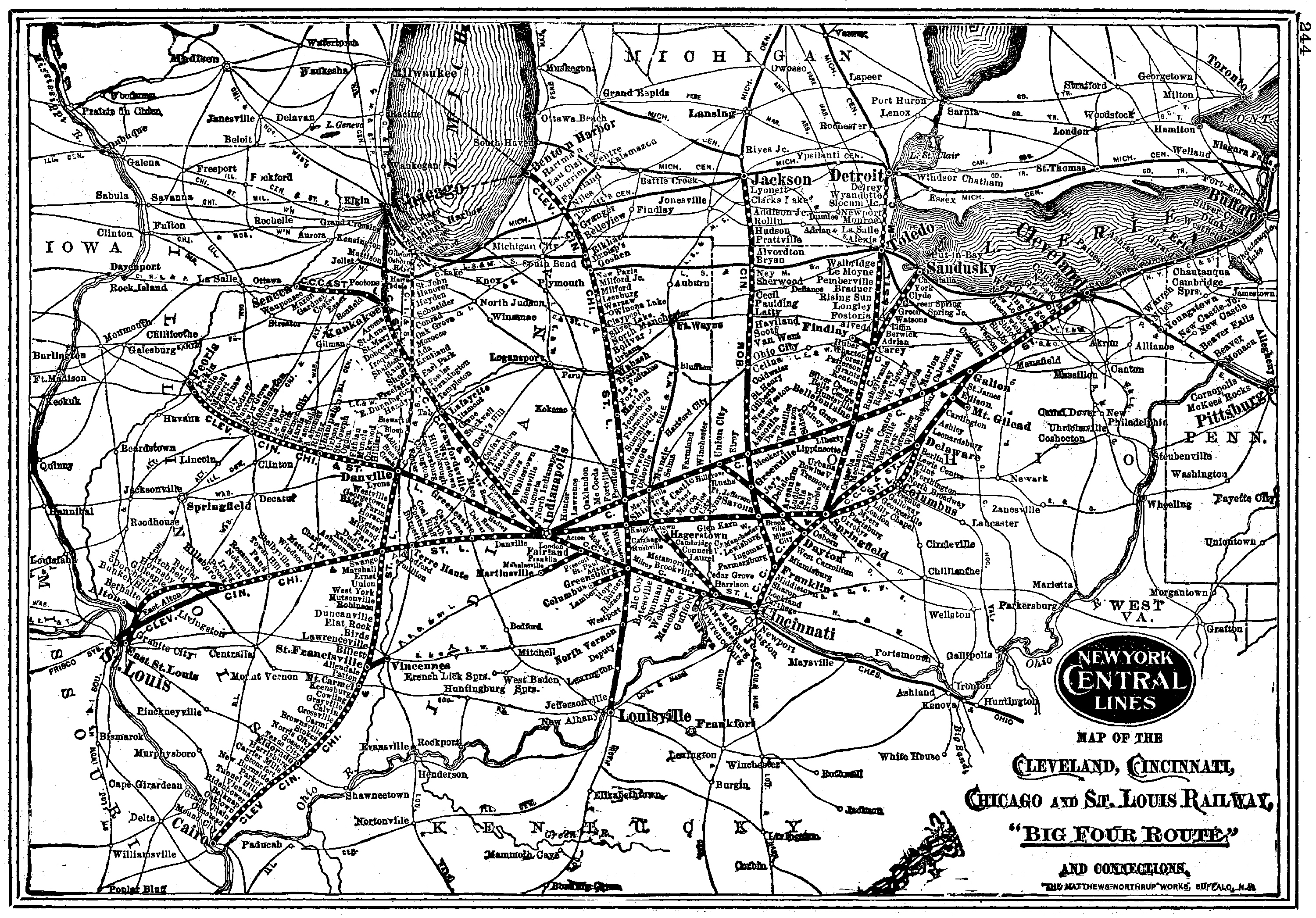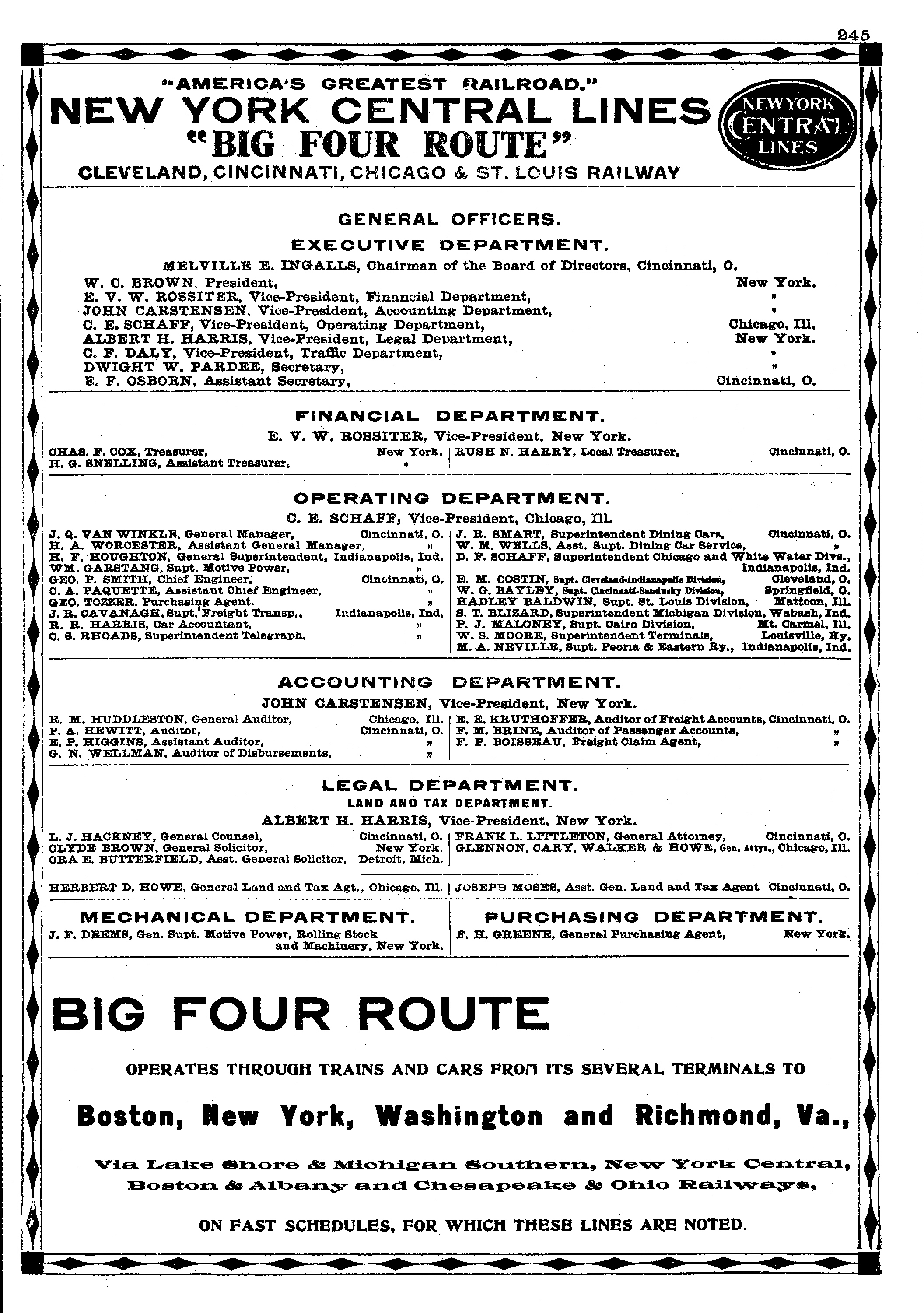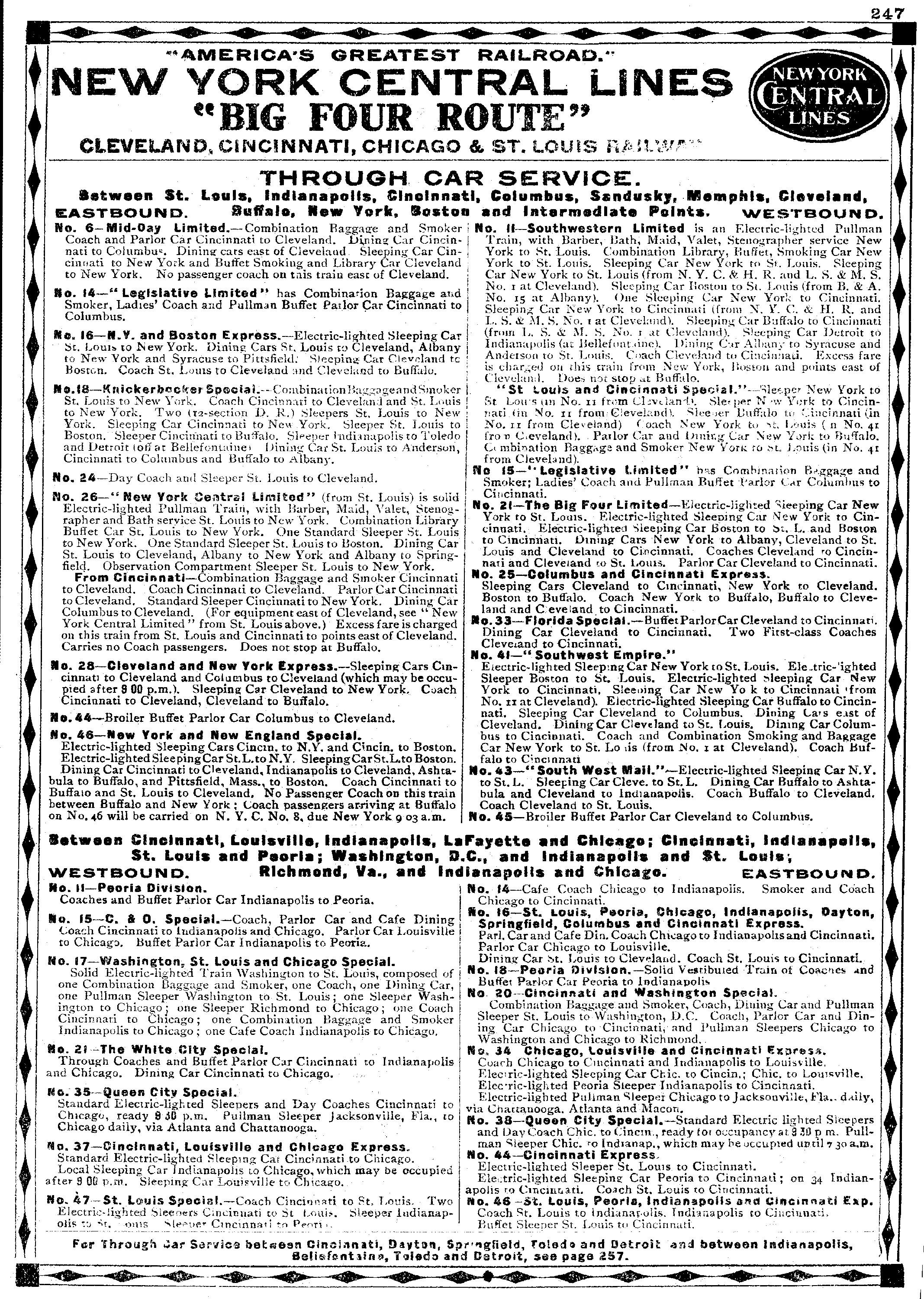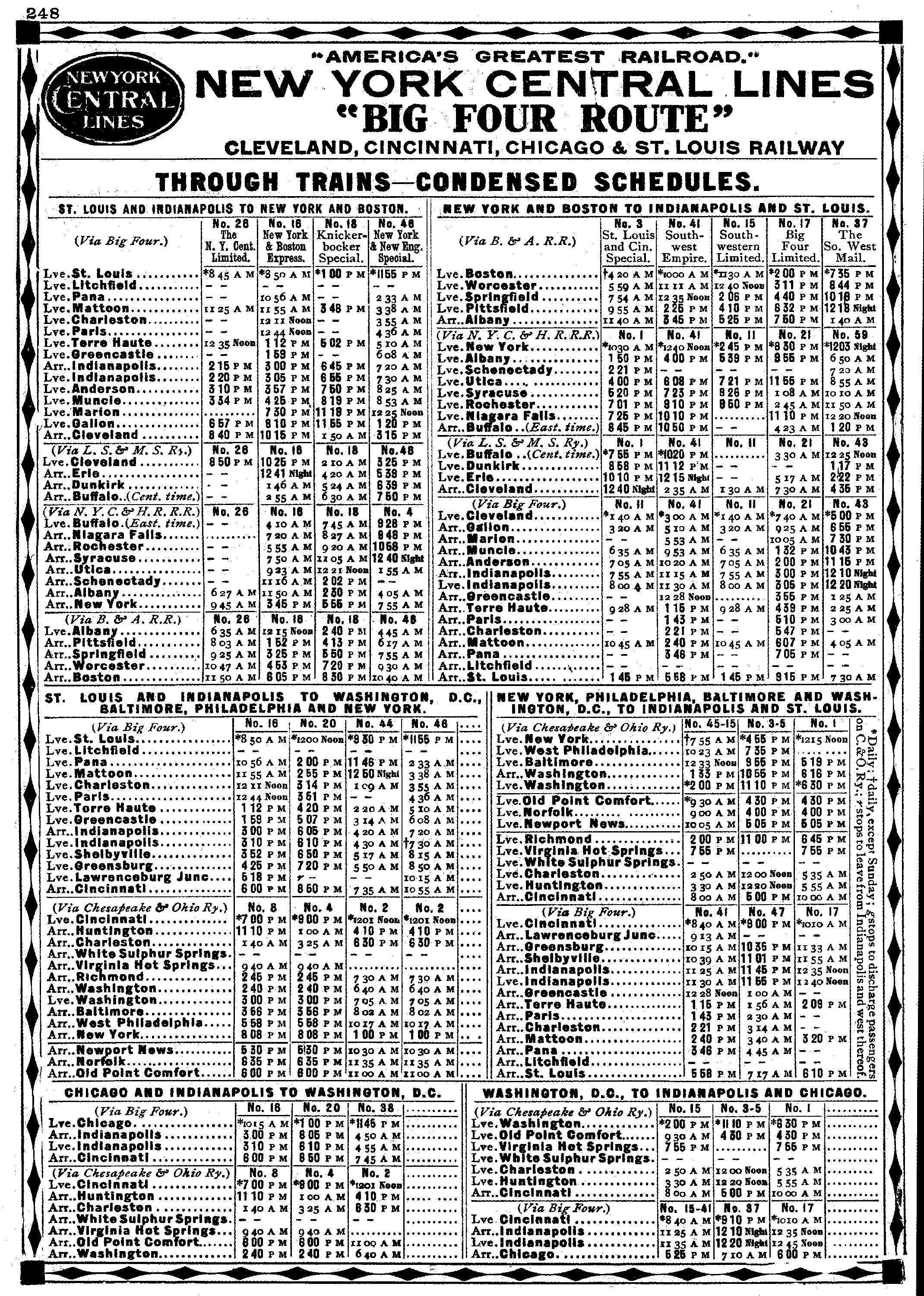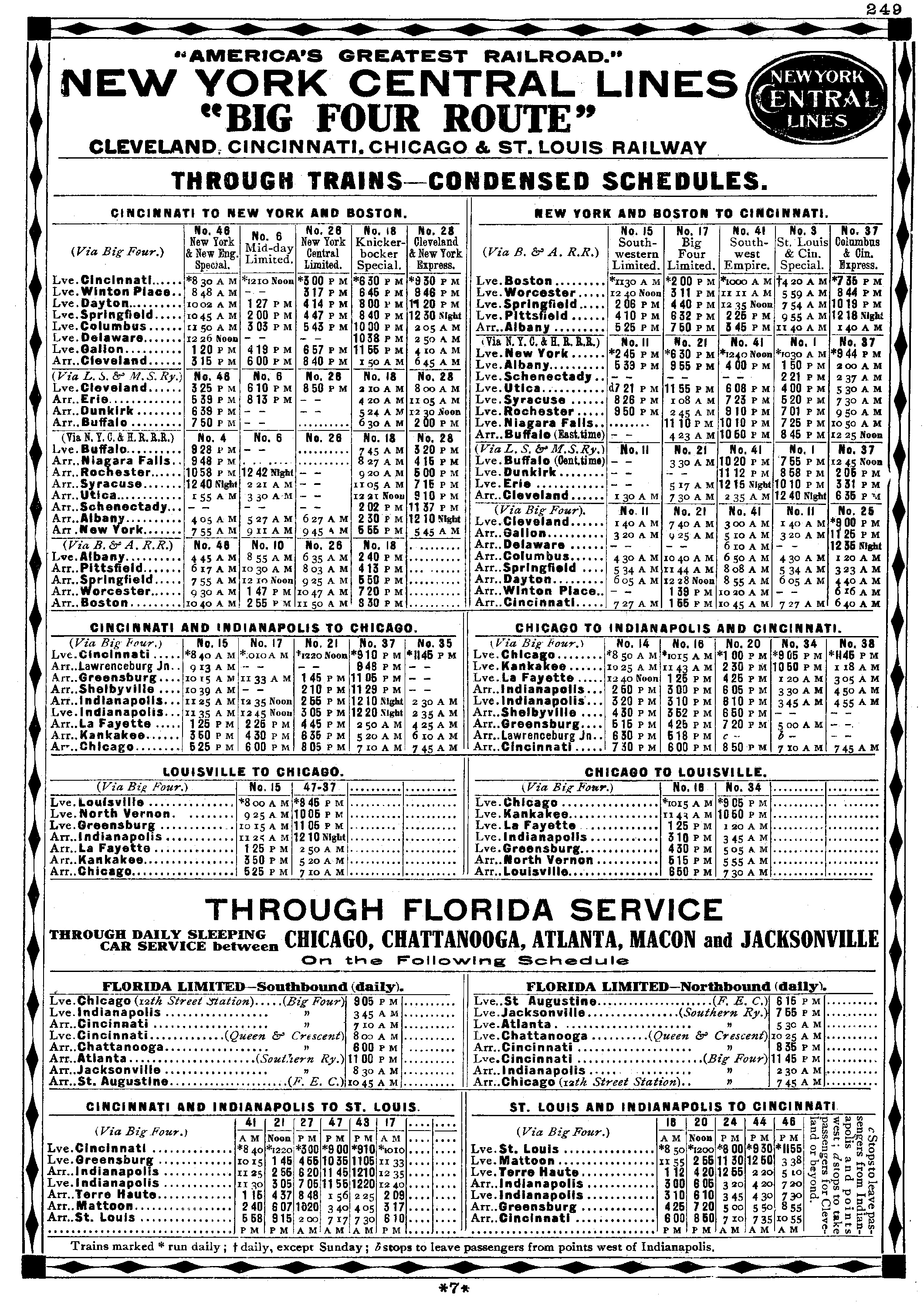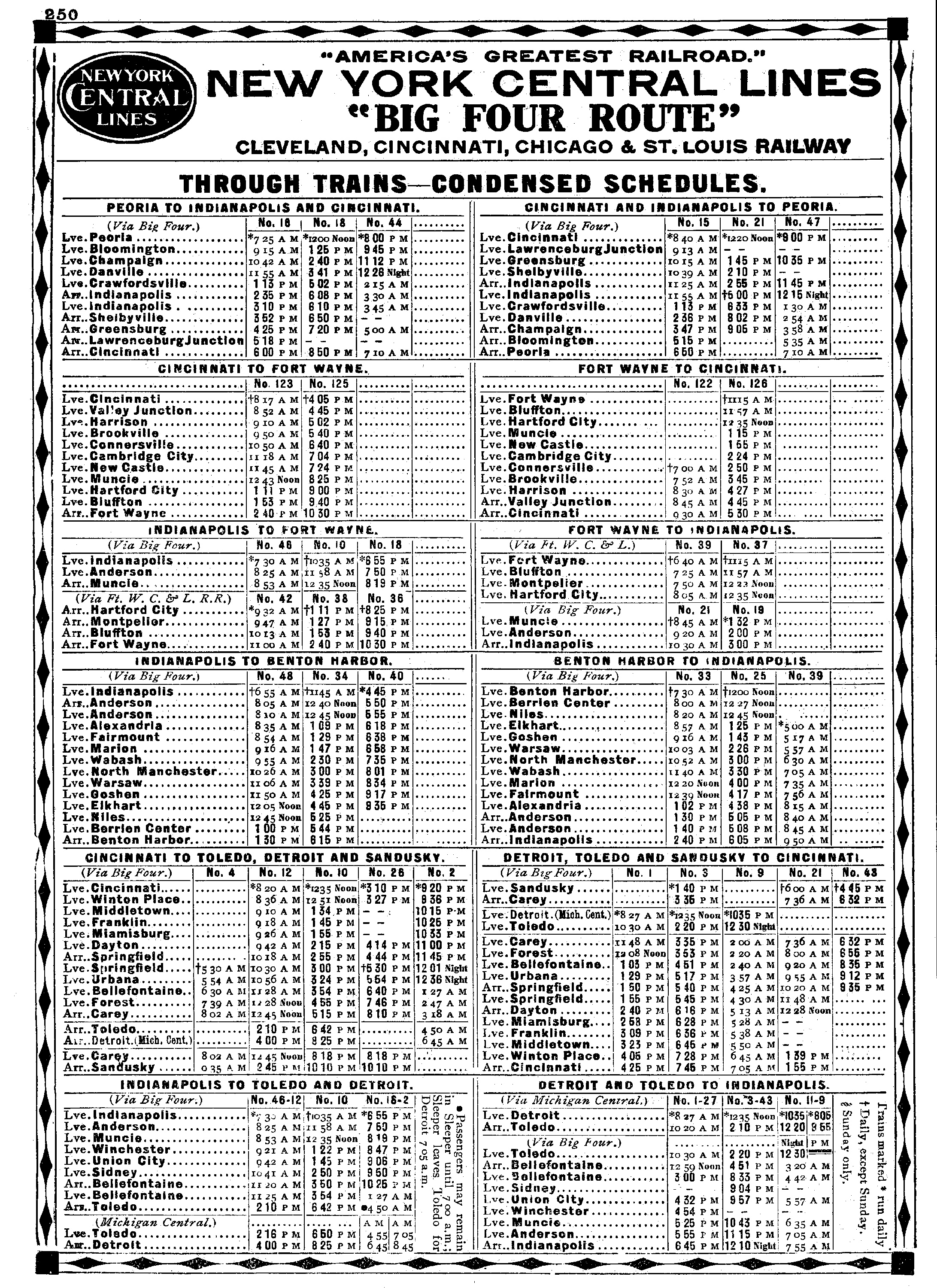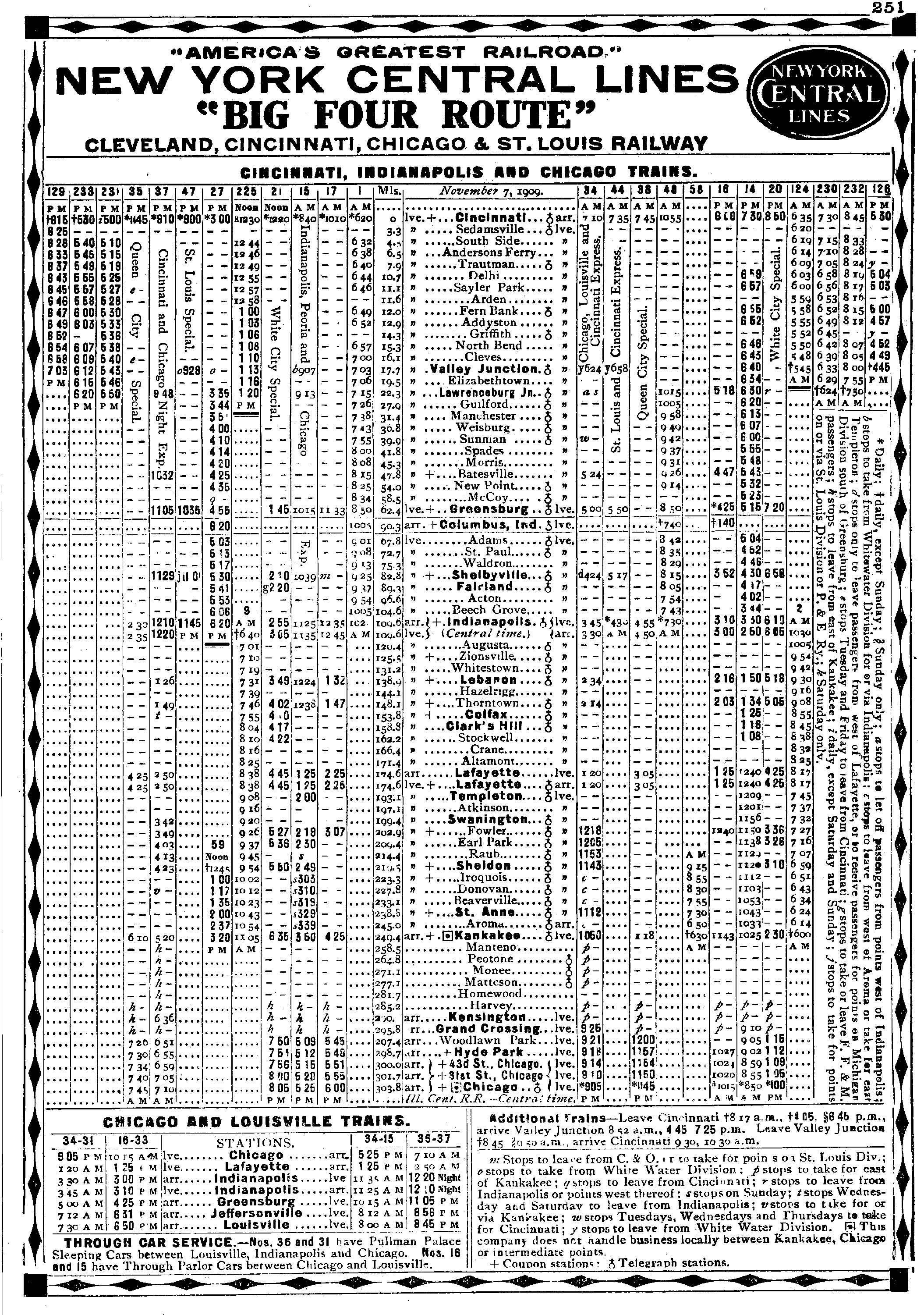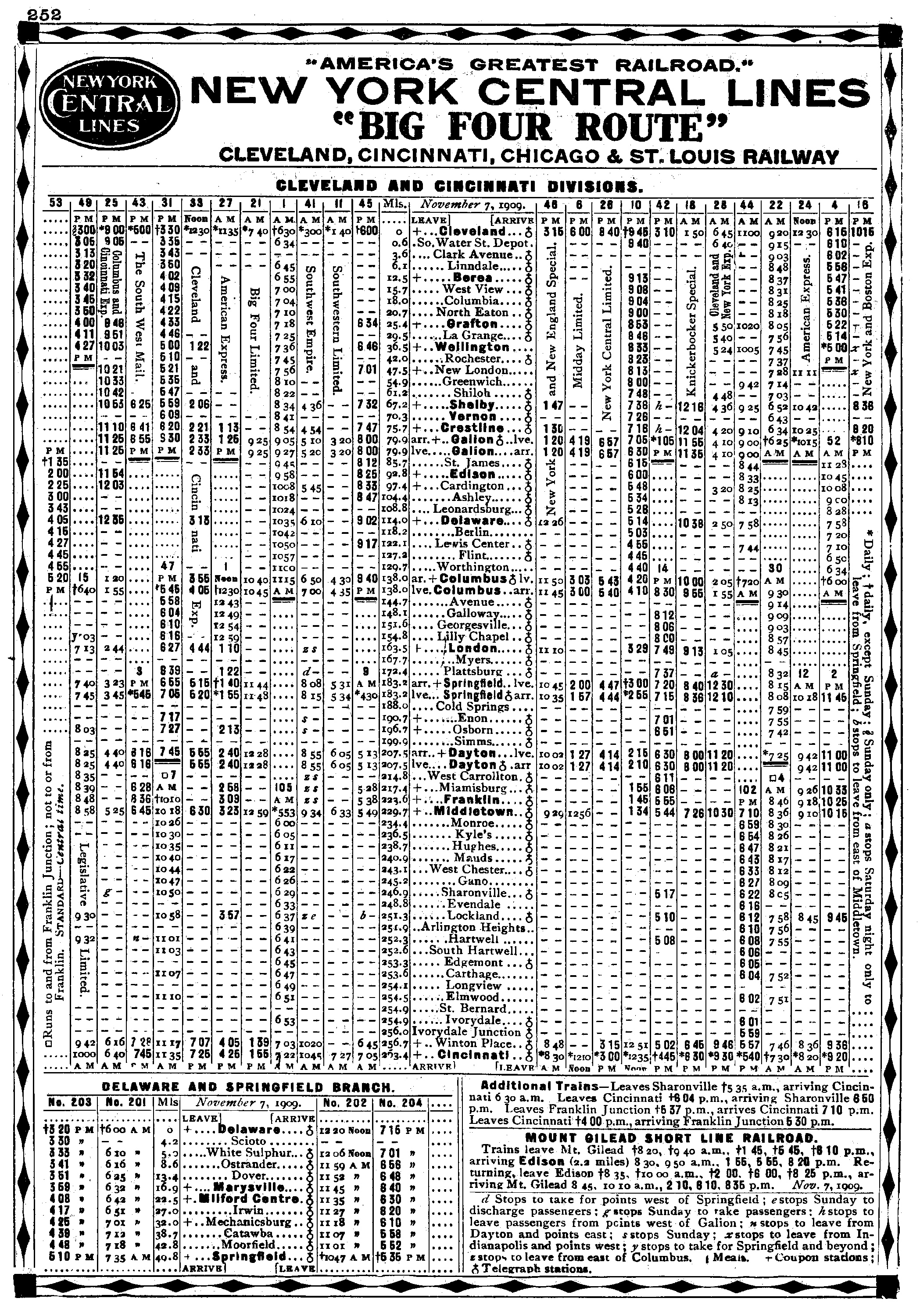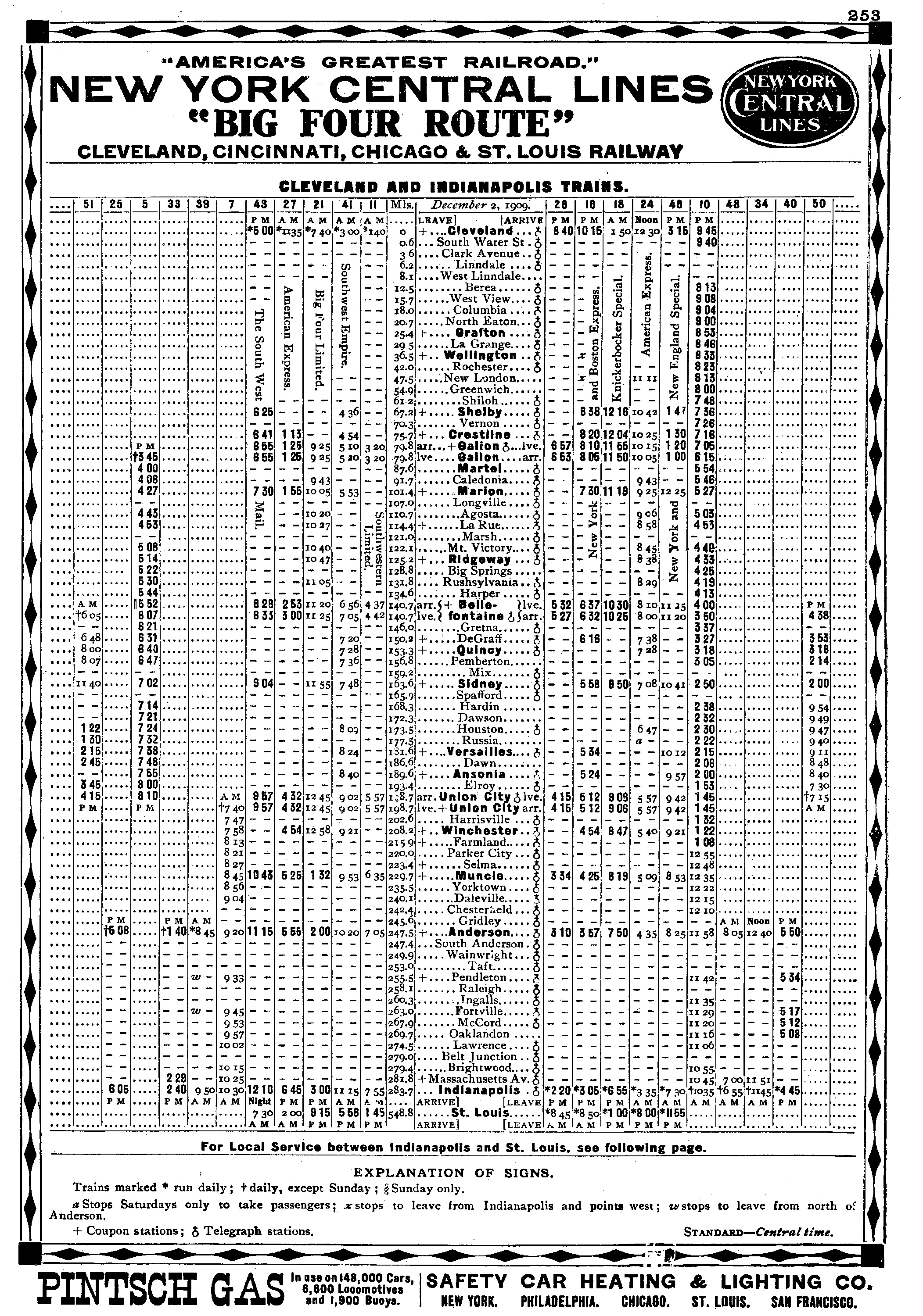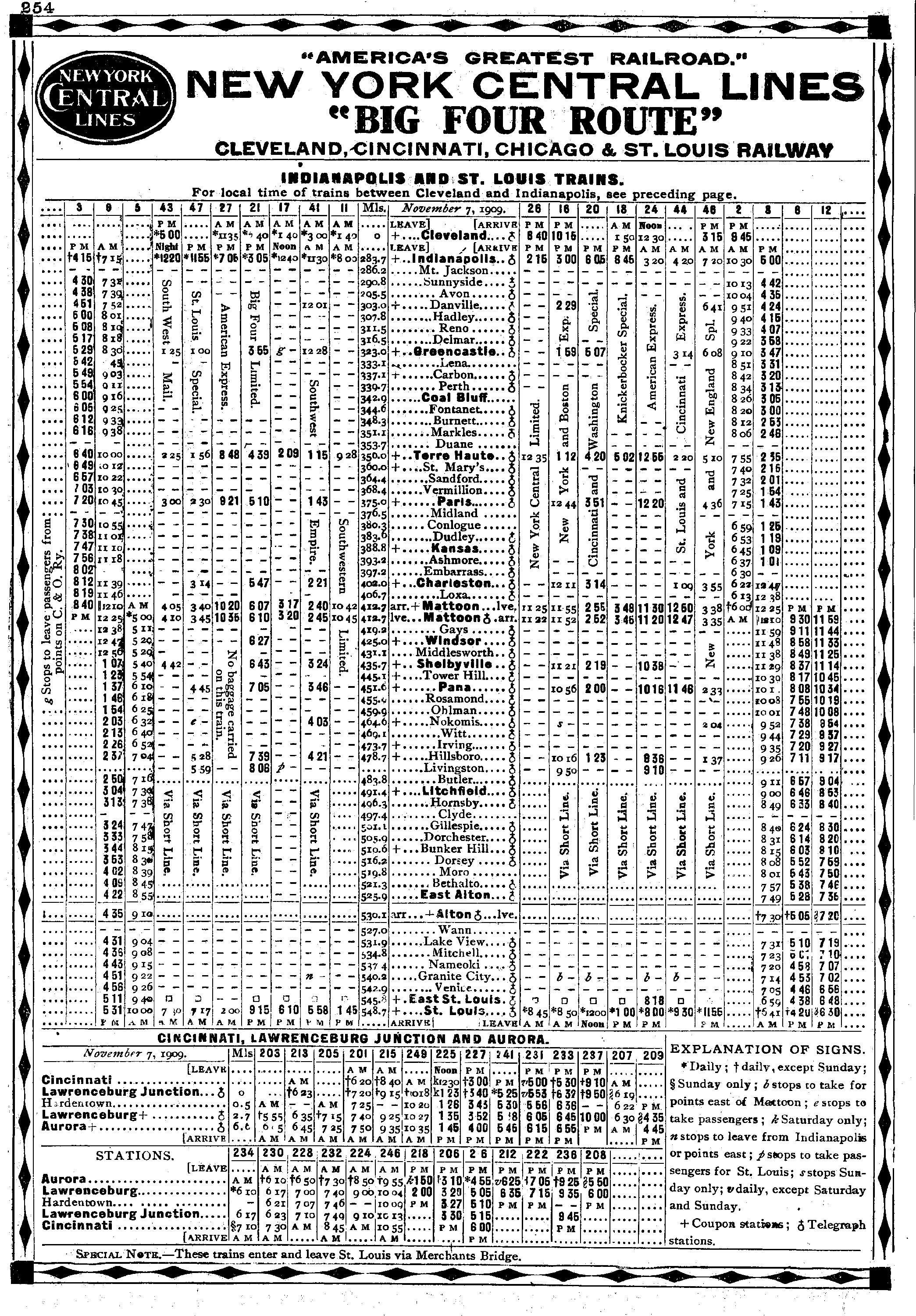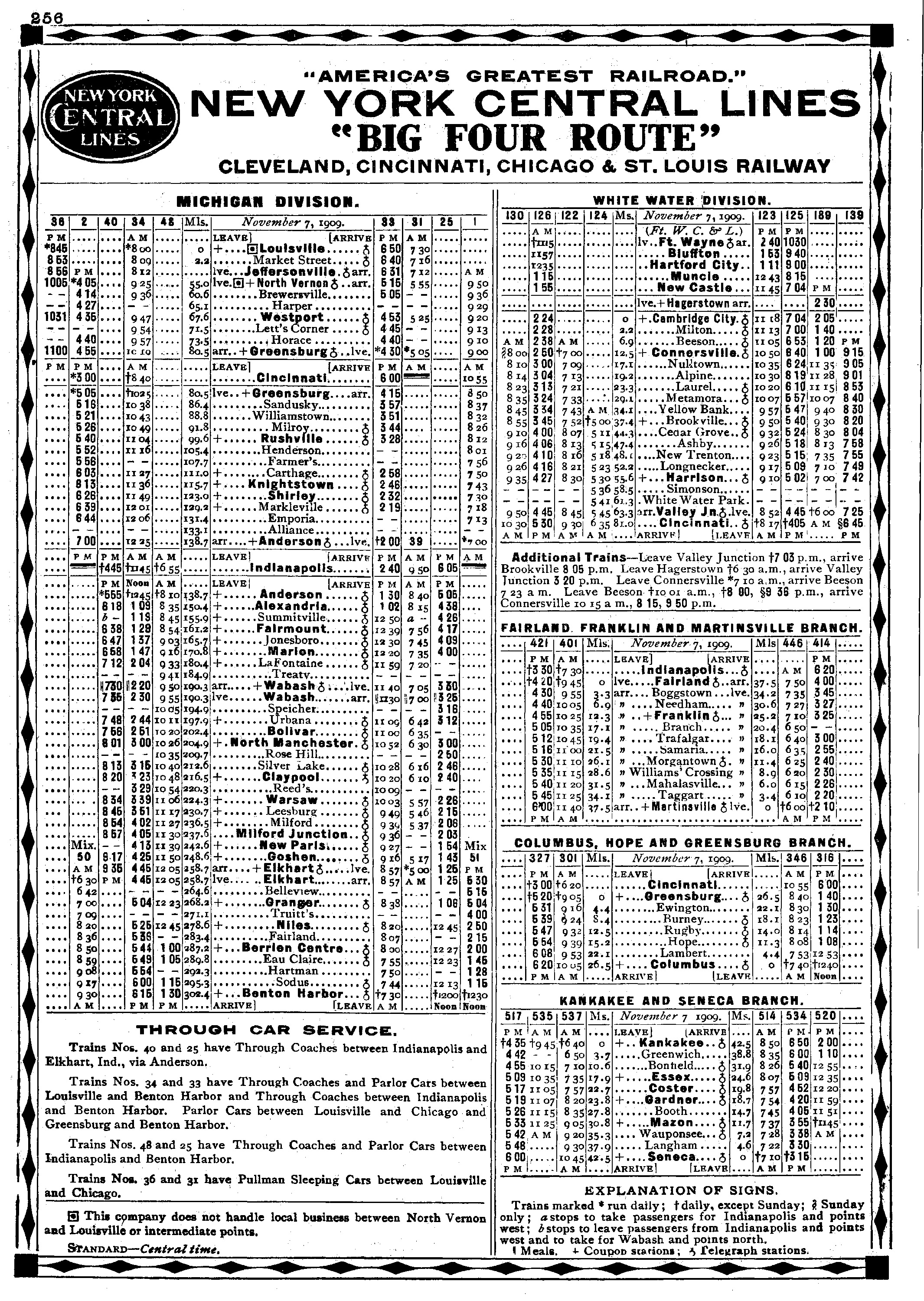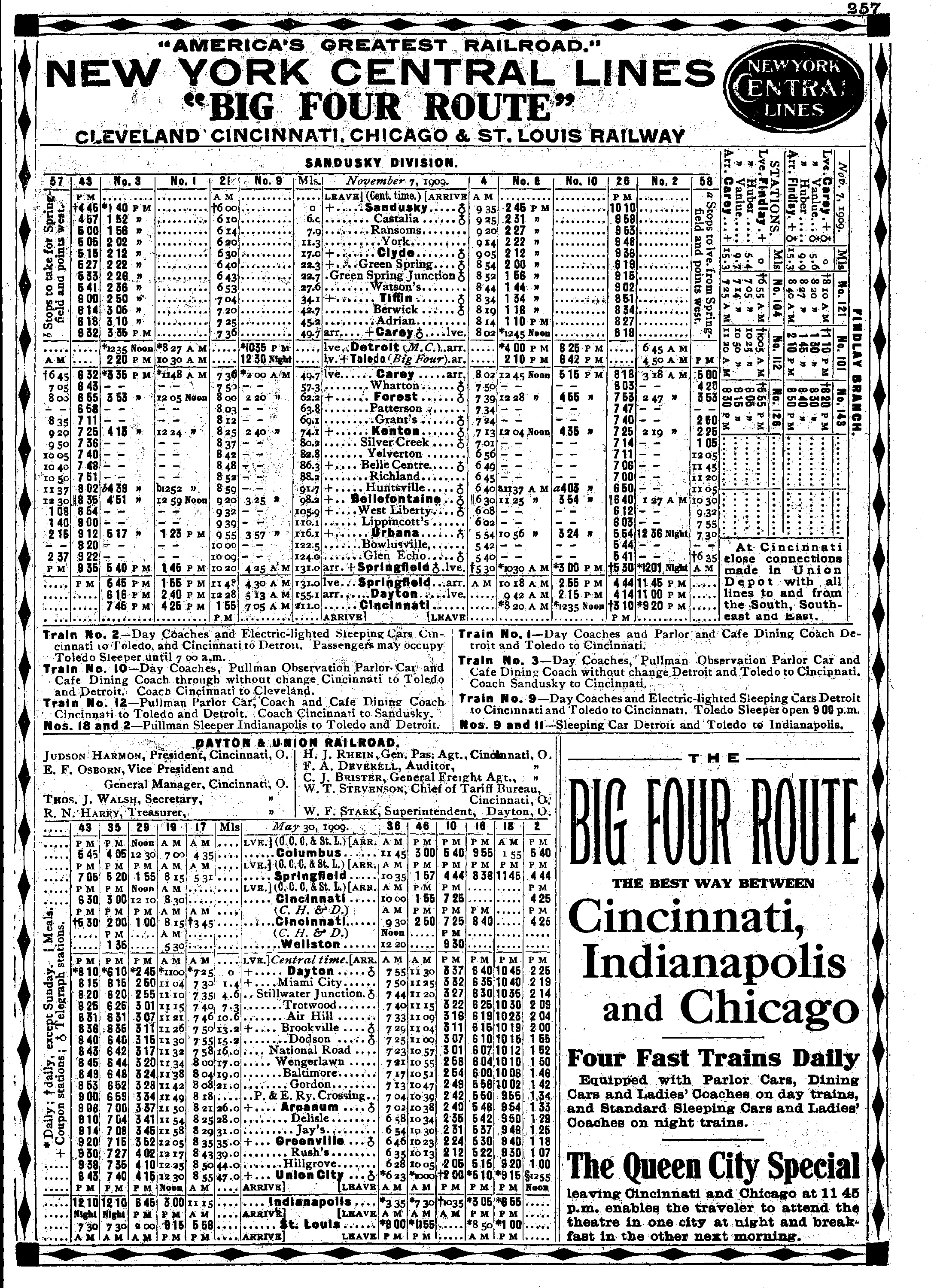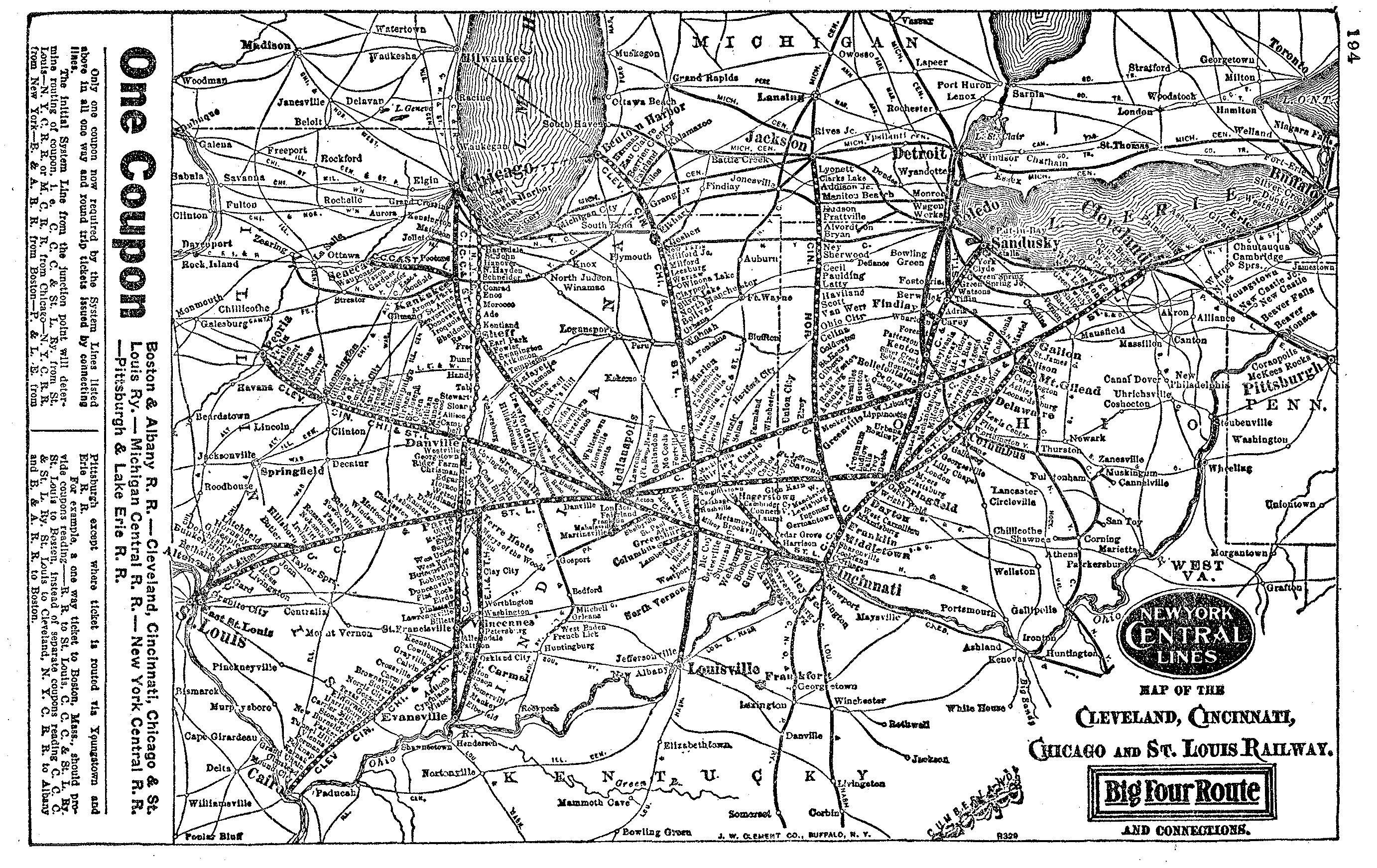Big Four Route Railroad (CCC&StL): Map, History, Timetables
Last revised: August 22, 2024
By: Adam Burns
The Big Four Railroad was short for the Cleveland, Cincinnati, Chicago & St. Louis Railway, a major component of New York Central's operations throughout the Midwest.
The genesis of this system begins in Ohio with the earliest chartered railroad dating back to the 1830s. Like most of the well-known names of the 19th century, such as the Michigan Central, Lake Shore & Michigan Southern (LS&MS), Panhandle Route, Plant System, and Texas & Pacific, the Big Four was the creation of multiple smaller lines.
It, along with the LS&MS and Michigan Central, comprised the bulk of New York Central's modern network in Michigan, Ohio, Indiana, and Illinois. The Big Four, alone, totaled roughly 2,400 miles and was largest of all three systems.
In the course of mergers and acquisitions there were two "Big Four Routes." The first predated New York Central control and was known as the Cincinnati, Indianapolis, St. Louis & Chicago Railroad.
The more well-known was the later Cleveland, Cincinnati, Chicago & St. Louis Railroad formed in 1889. Today, key through routes of the old Big Four carry on under Norfolk Southern and CSX Transportation.
Photos
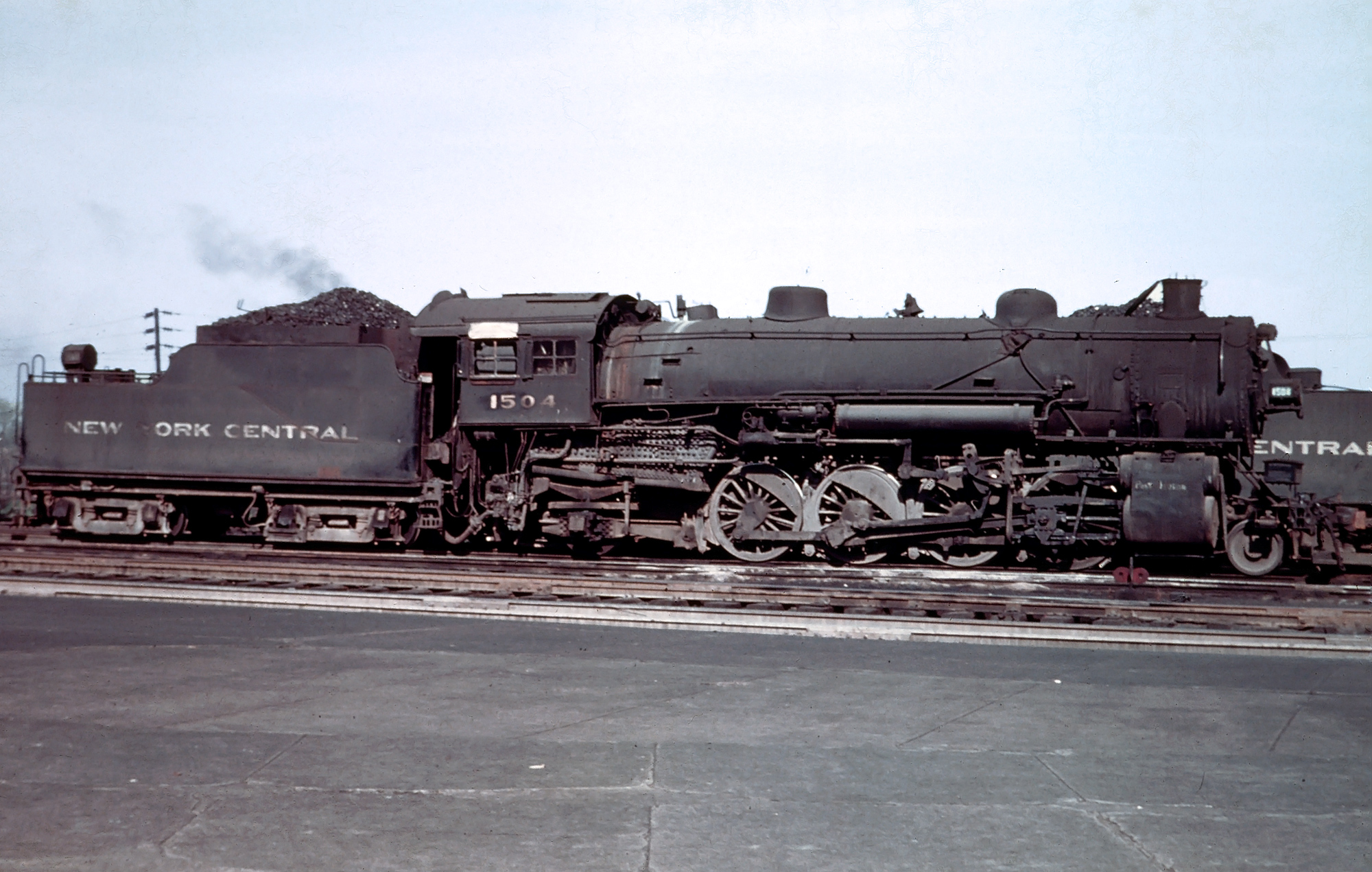 New York Central 2-8-2 #1504 (sublettered for the "Big Four") is seen here in East Alton, Illinois, circa 1950. The NYC owned some 1,342 examples across its system, many of which were sublettered for subsidiaries. These were the true workhorses on the NYC and handled general freight assignments. This particular example, originally a 2-8-0 (Class G-5), was built as #6004 in 1913 by Alco, listed as a Class H-5I. This unit was scrapped in 1953. Fred Byerly photo. American-Rails.com collection.
New York Central 2-8-2 #1504 (sublettered for the "Big Four") is seen here in East Alton, Illinois, circa 1950. The NYC owned some 1,342 examples across its system, many of which were sublettered for subsidiaries. These were the true workhorses on the NYC and handled general freight assignments. This particular example, originally a 2-8-0 (Class G-5), was built as #6004 in 1913 by Alco, listed as a Class H-5I. This unit was scrapped in 1953. Fred Byerly photo. American-Rails.com collection.History
The history of the Big Four Route comprised two components, the so-called Bee Line and the original "Big Four Route."
The Bee Line began in the 1830s with the Cleveland, Columbus & Cincinnati Railroad's (CC&C) chartering on March 14, 1836. At that time, Ohio was still considered the western frontier.
Nevertheless, by the 1830s numerous efforts were either already underway or in the planning stages to construct new railroads throughout Ohio. The state's first, the Mad River & Lake Erie, was chartered in 1835 and opened from Sandusky to Republic in 1839 (30 miles). Interestingly, this system would later join the Big Four.
The CC&C, like many railroads chartered at the time, struggled to secure financing. It would be twelve years before construction finally broke ground in 1847. The system, as its name suggests, was intended to link all three cities in its charter.
Work was slow, and at one point there was a possibility the road's charter would be voided due to lack of construction, but the railroad finally opened from Columbus to Cleveland by 1851.
At A Glance
Cleveland Division Cincinnati Division Peoria & Eastern DivisionCairo Division Michigan Division Indianapolis DivisionSt. Louis Division Chicago Division Whitewater DivisionSandusky Division |
|
Delaware & Springfield Branch Mount Gilead Short Line Railroad Fairland, Franklin & Martinsville Branch Columbus, Hope & Greensburg Branch Kankakee & Seneca Branch Findlay Branch Dayton & Union Railroad |
|
The following year the CC&C offered through service to Cincinnati with an interchange partnership through the Columbus & Xenia and Little Miami Railroad.
The two other founding components of the original Big Four Route included the Indianapolis & Bellefontaine Railroad (I&B) and the Bellefontaine & Indiana Railroad (B&I); both were incorporated in 1848, the former on February 17th and the latter on February 25th.
Both were also under common ownership with the intent of opening through service from Galion, Ohio to Indianapolis, Indiana. The B&I was tasked with building the Ohio segment while the I&B intended to build the Indiana section.
System Map (1910)
The two sections were completed by 1853 and then merged in 1863 to form the Bellefontaine Railway. The Official Guide Of The Railways from June, 1868 notes the railroad offered six different trains from Cleveland to Indianapolis and was referred to as the "Bellefontaine Line."
This was often shortened by the railroad as simply the "B Line" or "Bee Line." The Bellefontaine was later acquired by the CC&C in 1868.
Expansion
The original Big Four Route can trace its heritage to three roads that were dealing with severe financial issues by 1880; the Cincinnati & Indiana (C&I); Indianapolis, Cincinnati & Lafayette Railroad (IC&L); and the Cincinnati, Lafayette & Chicago Railroad (CL&C).
The heritage of these roads and their subsequent struggles could fill a separate book. In brief, the Cincinnati & Indiana was the first of the three formed, incorporated on February 7, 1853.
After several years of delays, the road was completed from Cincinnati to the Indiana state line. It also operated a short branch from the city to nearby Harrison, Ohio (also near the state line).
On May 1, 1866 the C&I was leased by the Indianapolis & Cincinnati Railroad (I&C), predecessor to the later Indianapolis, Cincinnati & Lafayette (IC&F). The I&C enjoyed its own interesting heritage that could be traced back to three predecessors which later merged on October 4, 1853.
By the time the I&C had leased the C&I, the former had completed its own line from Indianapolis to the Indiana state line and a connection with the latter, providing a through route from Cincinnati to Indianapolis.
Following the I&C's renaming as the Indianapolis, Cincinnati & Lafayette the latter road ran into financial difficulty. It was subsequently acquired by the Cincinnati, Indianapolis, St. Louis & Chicago Railway on May 6, 1880 (the CIStL&C had been incorporated just a few months prior on February 21, 1880).
Timetables (1910)
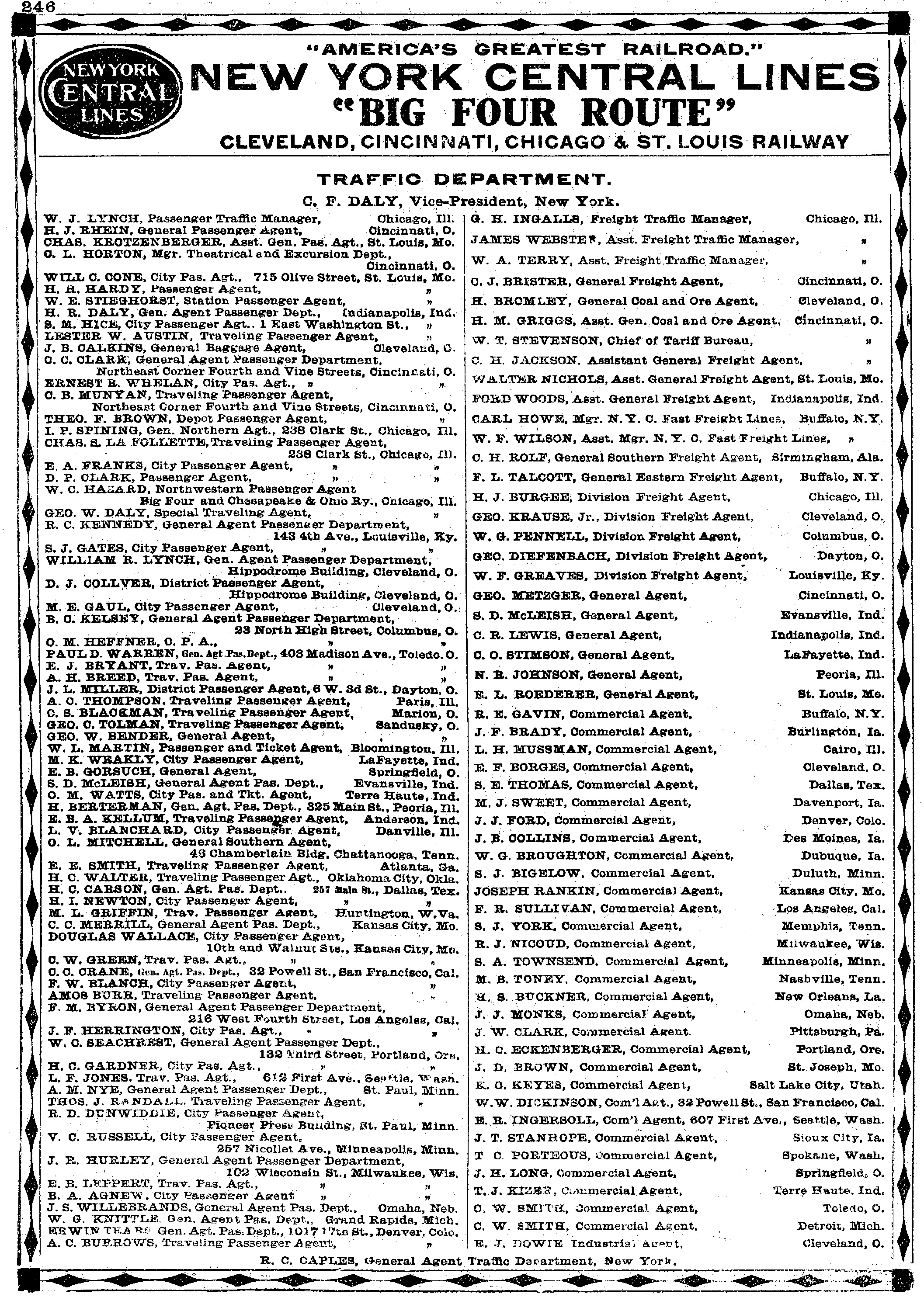
The CIStL&C also picked up the Cincinnati, Lafayette & Chicago, which operated a route from Indianapolis to Kankakee, Illinois. There, a connection with the Illinois Central provided through service to Chicago.
Under new management, the CIStL&C was a well operated railroad. It improved its Chicago connection and circumvented city congestion by building a western extension to Seneca, Illinois and a connection with the Rock Island.
New York Central
By doing so, the Big Four obtained a better link into the Windy City. By the 1880s, eastern giants Pennsylvania and New York Central & Hudson River were rapidly acquiring Midwestern systems to improve their competitive standing in the region.
For the NYC&HR it had fully acquired the Big Four and Bee Line by this time. On June 30, 1889 it merged both into the newly created Cleveland, Cincinnati, Chicago & St. Louis Railway, the second "Big Four Route."
Predecessors
In conjunction with this move the Big Four picked up several other lines including:
The Egyptian Line
This famous segment was originally built as the Cairo & Vincennes Railroad between 1870-1874 linking its namesake towns in Illinois, as well as Danville. It earned the nickname as the "Egyptian Line" since its southern terminus (Cairo, Illinois) was spelled like the ancient capital of Egypt.
This name stuck into the New York Central era. It was acquired in 1884 by the Vanderbilts, renamed as the Cairo, Vincennes & Chicago, and added to the new Big Four Route. In the modern NYC era this route handled significant coal business. Today, the line is gone south of Vincennes/St. Francisville.
St. Louis, Alton & Terre Haute Railroad
This system began as the Terre Haute & Alton Railroad, chartered in January, 1851 and completed from Terre Haute, Indiana, to Alton, Illinois on March 1, 1856. It was extended to East St. Louis shortly thereafter and renamed as the Terre Haute, Alton & St. Louis Railroad.
Following financial difficulty in 1862 it was reorganized as the St. Louis, Alton & Terre Haute before being acquired by the Vanderbilts in the mid-1880s.
Peoria & Eastern Railway
The history of the P&E can trace its heritage back to the aforementioned Mad River & Lake Erie (MR&LE), chartered in 1835. It was Ohio's first railroad and tasked with opening a line from Sandusky to Dayton via Springfield.
It later joined the Cincinnati, Sandusky & Cleveland in 1866 and was subsequently sold to the Indiana, Bloomington & Western in 1881. The IB&W maintained a rather large operation linking Sandusky, Springfield, Indianapolis, Danville, Bloomington, and Pekin.
Following financial difficulty in 1887 it became the Ohio, Indiana & Western which later became the Peoria & Eastern Railway. The P&E went on to join the Big Four in 1890. Interestingly, P&E markings could still be found on NYC equipment into the diesel era and it remained a corporate entity until the creation of Conrail in 1976.
Cincinnati Northern Railroad
This system began as the Cincinnati, Van Wert & Michigan Railroad, chartered in 1881 to build north from the Bee Line at Franklin, Ohio (Cincinnati). It later linked up with the Jackson & Ohio Railroad at the Michigan state line where this road continued north to Jackson, Michigan.
The two merged in 1886 forming the Cincinnati, Jackson & Mackinaw Railroad. The CJ&M was subsequently acquired by the Cincinnati Northern in 1897, a small terminal road linking Cincinnati with Dayton that had its own long history. The Big Four then acquired all of the CN's stock holdings in 1902.
Evansville, Indianapolis & Terre Haute Railroad
This road began as the Evansville & Indianapolis in 1885, which later opened between Evansville and Terre Haute. It was renamed as the Evansville, Indianapolis & Terre Haute and acquired by the Big Four in 1920.
System Map (1930)
While the Cleveland, Cincinnati, Chicago & St. Louis Railway had, technically, remained an independent entity well into the 20th century it had always been a Vanderbilt-owned property and operated as part of the NYC network. In 1930, the New York Central formally leased the Big Four Route for 99 years. It remained a corporate entity until the creation of Conrail in 1976.
The Big Four Route was predominantly a paper-only system throughout the NYC era of the 20th century. It comprised most of the Central's network west of Ohio and this territory was regularly referred to as the "Big Four."
However, equipment was typically devoid of any CCC&StL markings. The Big Four was a vitally important component of the New York Central by providing connections to Cincinnati, Columbus, Indianapolis, Peoria, and St. Louis.
It also maintained secondary routes into Detroit, Chicago, Toledo, and other points. The NYC's self-proclaimed "Great Steel Fleet" offered premier services to these cities such as the Ohio State Limited, Southwestern Limited, Knickerbocker, and others. Today, the key through routes of the Big Four continue on under CSX Transportation and Norfolk Southern.
Sources
- Allen, W.F and Allen, E.S. "The Official Guide Of The Railways And Steam Navigation Lines Of The United States, Porto Rico, Canada, Mexico And Cuba." The National Railway Publication Company. Volume #42, Issue #8. January, 1910. Pages 244-257.
- Burns, A.J. and Burns, J.F. "The Official Guide Of The Railways And Steam Navigation Lines Of The United States, Porto Rico, Canada, Mexico And Cuba." The National Railway Publication Company. Volume #62, Issue #8. January, 1930. Page 194.
- Doughty, Geoffrey H. New York Central's Great Steel Fleet, 1948-1967 (Revised Edition). Lynchburg: TLC Publishing, Inc., 1999.
- Selby, Paul. Historical Encyclopedia of Illinois and History of Sangamon County, Vol. II. Chicago: Munsell Publishing Company, 1912.
- Solomon, Brian and Schafer, Mike. New York Central Railroad. St. Paul: Andover Junction Publications, 2007.
Contents
Recent Articles
-
Florida - Wine Tasting - Train Rides
Dec 22, 25 11:47 AM
Wine by train not only showcases the beauty of Florida's lesser-known regions but also celebrate the growing importance of local wineries and vineyards. -
Iowa Thomas The Train Rides
Dec 22, 25 10:50 AM
This article explores the magical journey of spending a day with Thomas and what families can expect from this unforgettable experience in Iowa. -
North Carolina Thomas The Train Rides
Dec 22, 25 10:45 AM
North Carolina is one of the few states home to two different Thomas the Tank Engine events. Learn more about them here!

